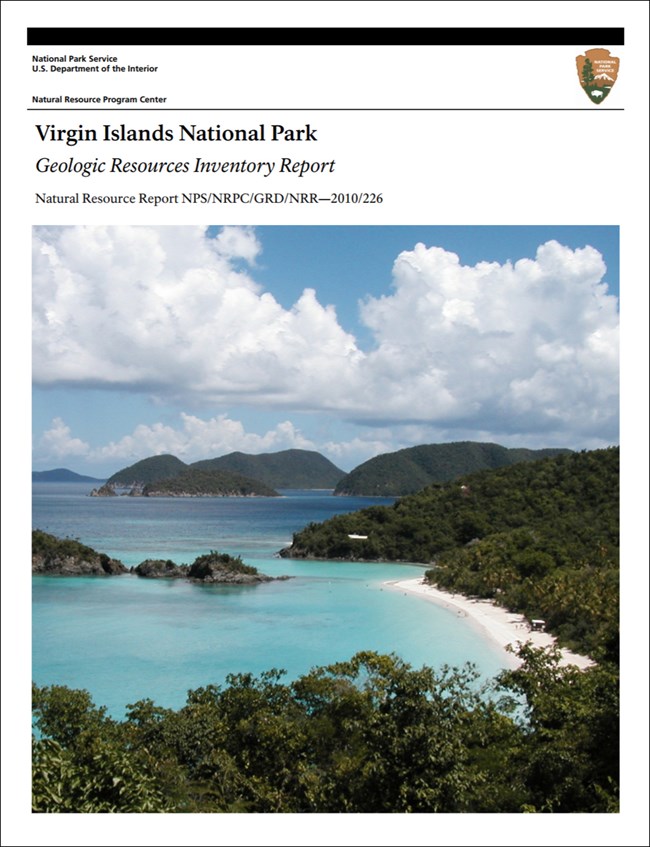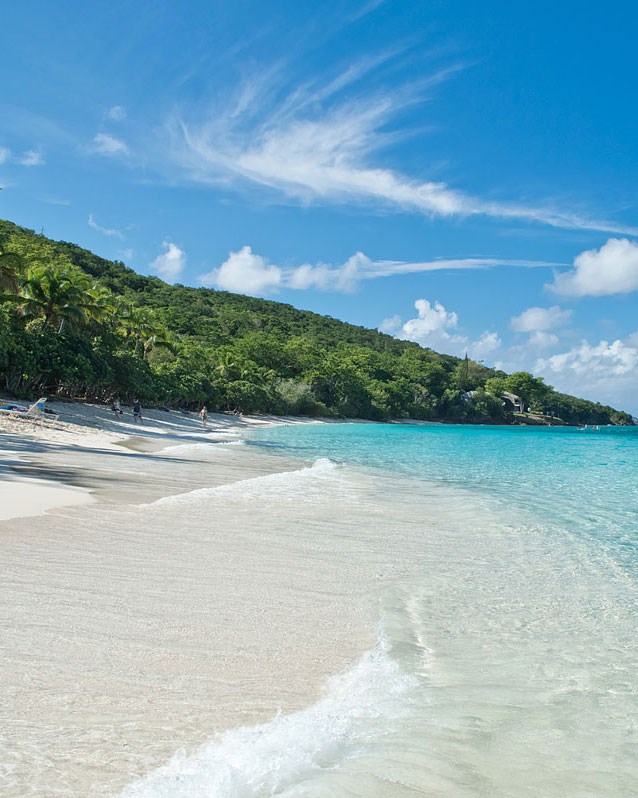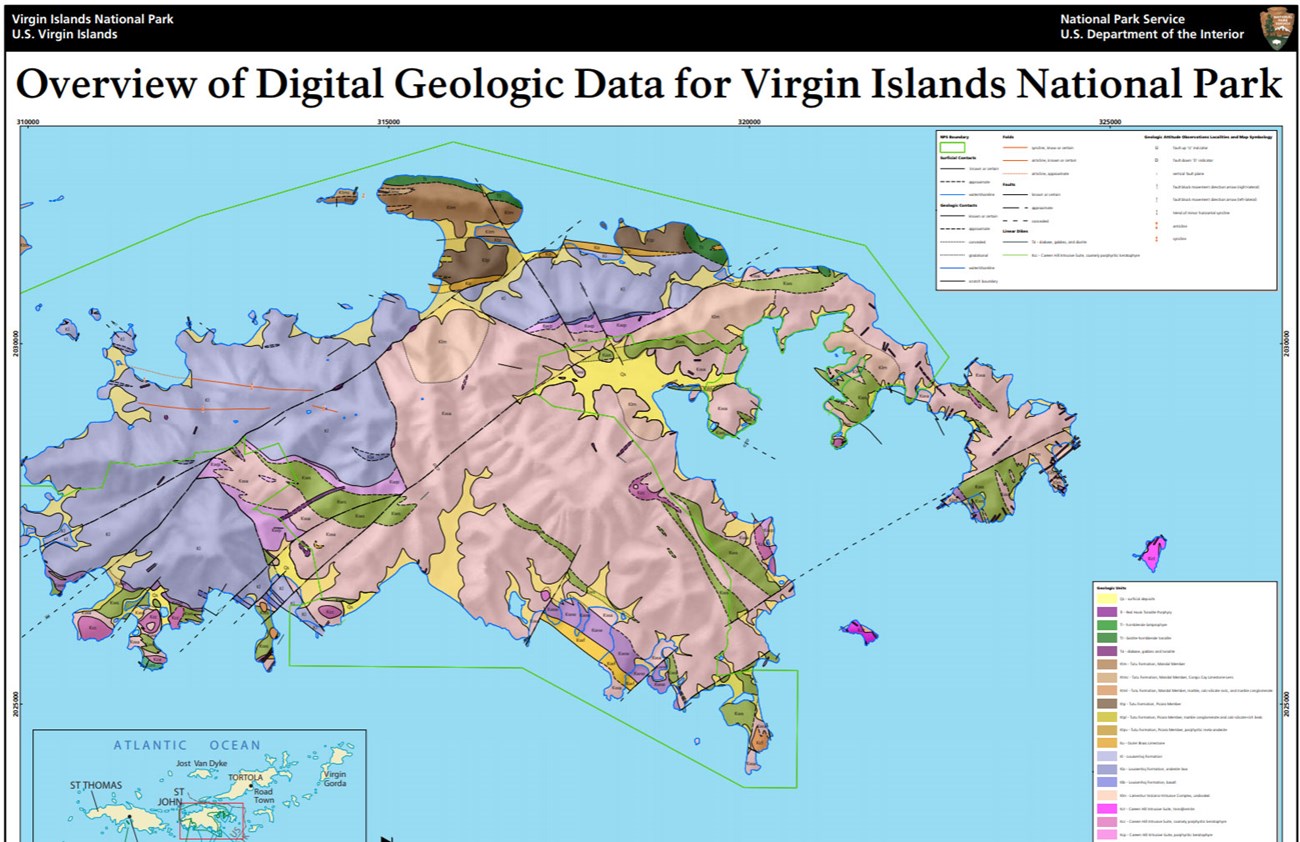Last updated: July 17, 2024
Article
NPS Geodiversity Atlas—Virgin Islands National Park, Virgin Islands
Geodiversity refers to the full variety of natural geologic (rocks, minerals, sediments, fossils, landforms, and physical processes) and soil resources and processes that occur in the park. A product of the Geologic Resources Inventory, the NPS Geodiversity Atlas delivers information in support of education, Geoconservation, and integrated management of living (biotic) and non-living (abiotic) components of the ecosystem.

Introduction
Virgin Islands National Park (VIIS) is located in the U.S. Virgin Islands, encompassing nearly twothirds of St. John Island with its surrounding coastal waters, part of St. Thomas Island, and nearly all of Hassel Island. Authorized on August 2, 1956, VIIS contains approximately 6,049 hectares (14,948 acres) and preserves biologically rich Caribbean tropical marine and terrestrial ecosystems that include coral reefs, seagrass beds, coves, coastal beaches, mangrove forests, salt ponds, subtropical forests, and the largest and most intact dry tropical forests remaining in the Caribbean. Tropical habitats within SARI feature more than 700 plants species, serve as important wintering quarters for migratory bird species, and include a coral reef system that supports hundreds of aquatic species. The exceptional natural resources of VIIS are internationally known, and the park was designated by the United Nations Educational, Scientific and Cultural Organization (UNESCO) as the first biosphere reserve representing the Lesser Antilles in 1976 (National Park Service 2016c).
Geologic Setting
The bedrock geology of St. John Island and St. Thomas Island is comprised of volcanic and sedimentary strata spanning the Cretaceous through the Quaternary. A significant portion of VIIS is underlain by igneous rocks associated with the Cretaceous Lameshur Volcanic-Intrusive Complex, including the Water Island Formation and Careen Hill Intrusive Suite. These formations include a wide variety of intrusive and extrusive rocks that include gabbro, basalt, andesite, keratophyre (fine-grained, silica-rich igneous rocks), volcanic wacke, bedded tuff, and sheeted dikes (Rankin 2002). The Cretaceous Louisenhoj Formation is also extensively mapped across VIIS and is a heterogenous unit composed of volcaniclastic rocks, basalt, breccia, tuff, shale, chert, and rare limestone beds. On St. John Island, the northern coastal portion of VIIS is underlain by Cretaceous strata of the Outer Brass Limestone and Tutu Formation that extend from Mary Point eastward to Threadneedle Point. The Outer Brass Limestone forms a thin band of calcite marble and calc-silicate beds that separates the older Louisenhoj Formation from younger metavolcanic and metasedimentary rocks of the Tutu Formation. Cretaceous rocks along the northern coast of St. John are intruded by Cenozoic dikes consisting of biotite-hornblende tonalite, diabase, gabbro, and diorite. The youngest geologic units mapped in VIIS include unconsolidated Quaternary beach deposits, beachrock (sedimentary rock formed in tidal zones), swamp deposits, and alluvium.
Paleontological Resources
All NPS fossil resources are protected under the Paleontological Resources Preservation Act of 2009 (Public Law 111-11, Title VI, Subtitle D; 16 U.S.C. §§ 470aaa - 470aaa-11).
- Scoping summaries are records of scoping meetings where NPS staff and local geologists determined the park’s geologic mapping plan and what content should be included in the report.
- Digital geologic maps include files for viewing in GIS software, a guide to using the data, and a document with ancillary map information. Newer products also include data viewable in Google Earth and online map services.
- Reports use the maps to discuss the park’s setting and significance, notable geologic features and processes, geologic resource management issues, and geologic history.
- Posters are a static view of the GIS data in PDF format. Newer posters include aerial imagery or shaded relief and other park information. They are also included with the reports.
- Projects list basic information about the program and all products available for a park.
Source: NPS DataStore Saved Search 3190. To search for additional information, visit the NPS DataStore.
A NPS Soil Resources Inventory project has been completed for Virgin Islands National Park and can be found on the NPS Data Store.
Source: NPS DataStore Saved Search 3215. To search for additional information, visit the NPS DataStore.

Related Links
Related Articles
Virgin Islands National Park
National Park Service Geodiversity Atlas
The servicewide Geodiversity Atlas provides information on geoheritage and geodiversity resources and values within the National Park System. This information supports science-based geoconservation and interpretation in the NPS, as well as STEM education in schools, museums, and field camps. The NPS Geologic Resources Division and many parks work with National and International geoconservation communities to ensure that NPS abiotic resources are managed using the highest standards and best practices available.

